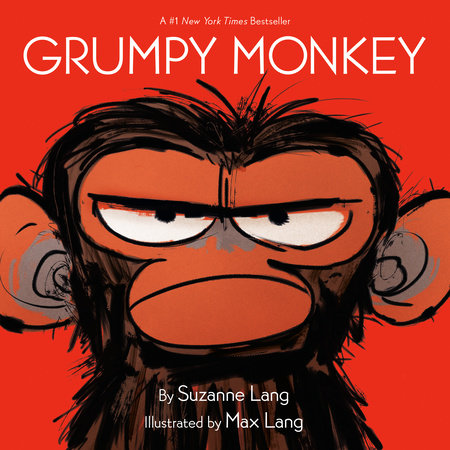Learning to Ride Out Uncomfortable Emotions with Grumpy Monkey
by Jennifer Garry
I’m almost entirely convinced that my youngest daughter has sunshine and rainbows emanating from her pores. Quick to giggle and always the first to crack a joke, she’s commonly referred to as “a character.” She relishes inappropriate humor (at eight, it’s all poop and butts all the time), and her comedic timing is nothing short of impeccable. She is our living, breathing reminder that we shouldn’t take life so seriously.
And all of these traits are exactly why the earth feels off-kilter when she’s grumpy.
“What’s wrong?”
Hmphhh.
“Are you ok?”
Grunt.
“Why are you grumpy?”
Grumble.
Thus starts the cycle of mommy trying to fix things and only making it worse (see also: my “fixing” tendencies when it comes to sadness). I poke and I prod. I try to make her giggle (it usually works, albeit briefly). I give suggestions and ask questions and get in her personal space until we’re both grumpy. Even when I seem to let it go, I hover, reminding her of her grumpiness at every turn.
Jim Panzee, the lead character in Suzanne Lang’s Grumpy Monkey, can totally relate to what my daughter experiences in those moments.
One morning, Jim wakes up feeling a little off. “The sun was too bright, the sky was too blue, and the bananas were too sweet,” his story explains. Jim’s friend Norman notices. Actually, like me, Norman doesn’t just notice: he diagnoses Jim as being grumpy and then follows him around the forest trying to help.
Norman tells all their animal friends that Jim is grumpy and, though Jim denies it, each of them chimes in to explain why he looks grumpy — from his hunched posture to his bunched-up eyebrows. The other animals also try to convince Jim that he should be happy, and they encourage him to do all the things that make them happy: singing, swinging, rolling, strolling, and everything in between.
At a certain point, Jim can’t take it anymore. All of his bottled-up feelings explode in a loud, chest-thumping denial that ends in him storming away from the rest of the group.
Once left on his own, Jim feels a little sorry for yelling at his friends and a little sorry for himself. He realizes he is grumpy. He stumbles upon Norman, who’s nursing a dance-induced porcupine-quill injury, and together the friends decide they’ll “probably feel better soon enough,” but for now, it’s okay to just be grumpy.
A powerful reminder that everyone feels a little cranky sometimes, little readers will recognize the big feelings depicted in Jim’s story and understand they’re not alone in feeling them. The colorful, expressive illustrations will make kids giggle without making Jim’s feelings seem any less important.
Ideally, this book will send a message to its not-so little readers as well. There’s nothing wrong with being grumpy, and sometimes you just have to let the people you love ride it out and emerge from their funk on their own time. If you want to help, sitting quietly like Jim and Norman do at the end of the book is much more effective than a barrage of reminders that a person is feeling off.
Sit tight — the sunshine and rainbows will come around again.

